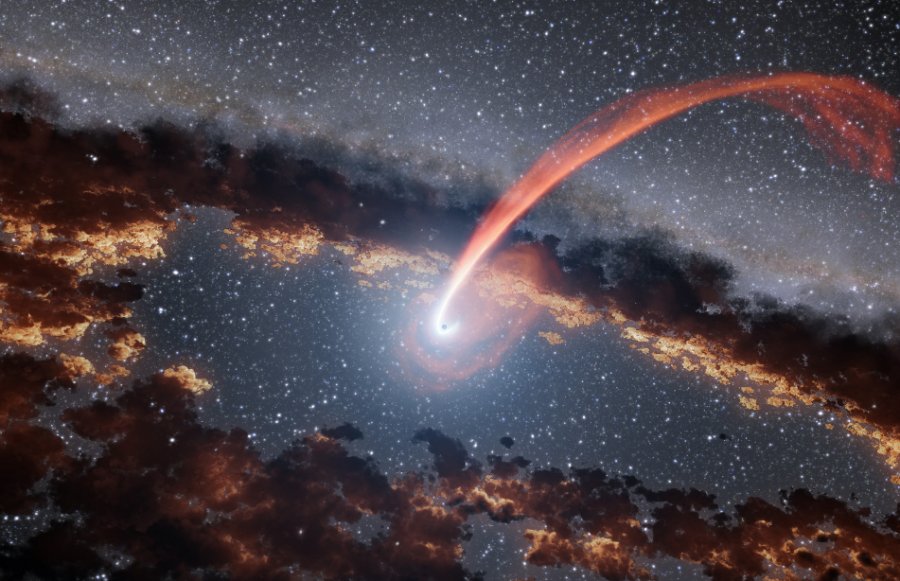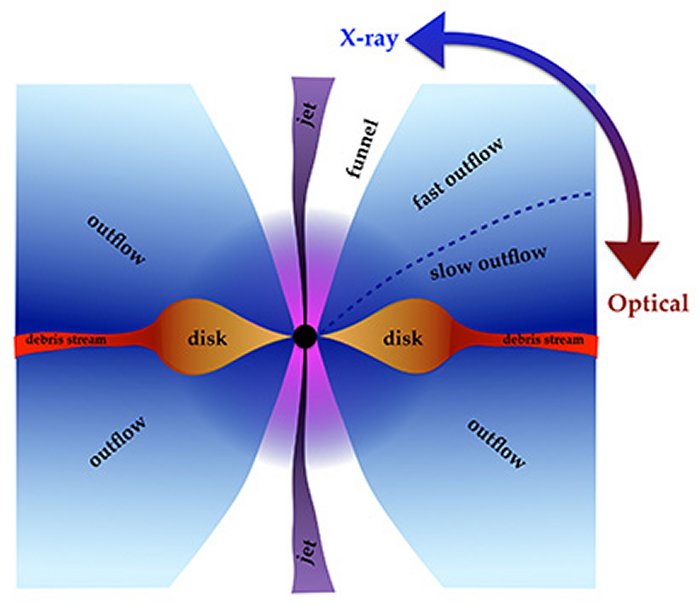MessageToEagle.com – Among the most extreme events taking place in the universe, there is special moment when a star wanders too close to the supermassive black hole in the center of its galaxy.
The star will be torn apart by the black hole’s gravity in a violent cataclysm called a tidal disruption event (TDE) and such incident produces a bright flare of radiation.
Now, theoretical astrophysicists at the University of Copenhagen’s Niels Bohr Institute and UC Santa Cruz developed a unified model that explains recent observations of such events.

“Only in the last decade or so have we been able to distinguish TDEs from other galactic phenomena, and the new model will provide us with the basic framework for understanding these rare events,” said coauthor Enrico Ramirez-Ruiz, professor and chair of astronomy and astrophysics at UC Santa Cruz and Niels Bohr Professor at the University of Copenhagen.
In most galaxies, the central black hole is quiescent, not actively consuming any material and therefore not emitting any light. Tidal disruption events are rare, only happening about once every 10,000 years in a typical galaxy. When an unlucky star gets torn apart, however, the black hole is “overfed” with stellar debris for a while and emits intense radiation.
“It is interesting to see how materials get their way into the black hole under such extreme conditions,” said first author Jane Lixin Dai, assistant professor at the University of Copenhagen, who led the study.
“As the black hole is eating the stellar gas, a vast amount of radiation is emitted. The radiation is what we can observe, and using it we can understand the physics and calculate the black hole properties. This makes it extremely interesting to go hunting for tidal disruption events.”

In the new model, it is the viewing angle of the observer that accounts for differences in the observations. Galaxies are oriented randomly with respect to the line of sight of observers on Earth, who see different aspects of a tidal disruption event depending on its orientation.
“It is like there is a veil that covers part of a beast,” Ramirez-Ruiz explained. “From some angles we see an exposed beast, but from other angles we see a covered beast. The beast is the same, but our perceptions are different.”
MessageToEagle.com






